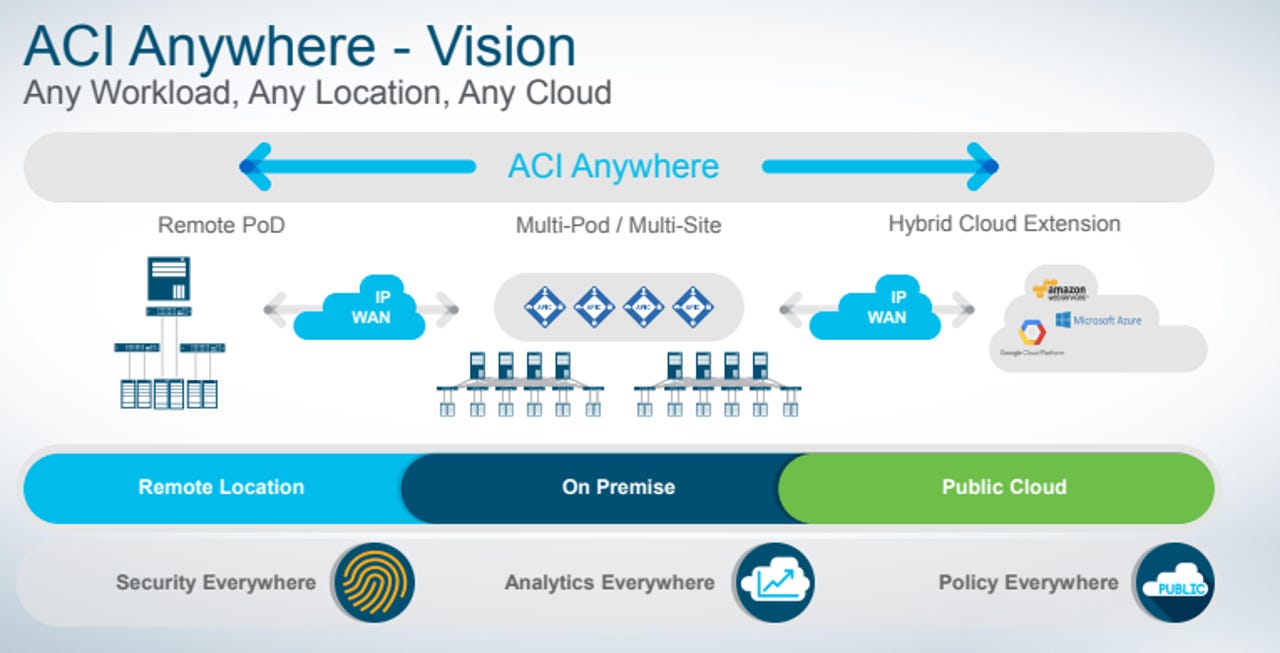Cisco updates ACI for customers moving to a multi-cloud strategy


Cisco on Thursday announced updates to its software-defined networking (SDN) offering, Application Centric Infrastructure (ACI), with the intent of simplifying network management for the growing number of customers adopting complex, multi-cloud strategies.
Enterprise Software
The latest release (ACI 3.0) offers improved security and simplified management for any combination of workloads in containers, virtual machines, and bare metal for private clouds and on-premise data centers.
"By automating basic IT operations with a central policy across multiple data centers and geographies, ACI's new multi-site management capability helps network operators more easily move and manage workloads with a single pane of glass - a significant step in delivering on Cisco's vision for enabling ACI Anywhere," Ish Limkakeng, SVP for data center networking at Cisco, said in a statement.
Cisco's ACI platform has performed well and had a record quarter in Q4 2017 with 38 percent growth. It's Cisco's fastest growing data center switching platform.
New features include:
- Multi-site Management: Customers can connect and manage multiple ACI fabrics that are geographically distributed to improve availability by isolating fault domains. They can also use a single management portal for a global view of network policy.
- Kubernetes Integration: Customers can deploy their workloads as micro-services in containers,define ACI network policy for these through Kubernetes, and get unified networking constructs for containers, virtual machines, and bare-metal.
- New User Interface: The new release offers more consistent layouts and simplified topology views, as well as troubleshooting wizards. In addition to the new UI, there are new capabilities that improve visibility and flexibility, such as the ability to measure latency between application end-points, and end-point groups.
- Security: ACI 3.0 uses First Hop Security integration to mitigate attacks like IP/MAC spoofing. Users can also automatically authenticate workloads and place them in trusted security groups.
PREVIOUS AND RELATED COVERAGE
Telstra, Cisco unveil SDN products for cloud security, data center connection
Cisco updates ACI platform, adds Docker, more virtualization support
Cisco's answer to software defined networking for its hardware adds Docker support as well more support for VMware and Microsoft Hyper-V.